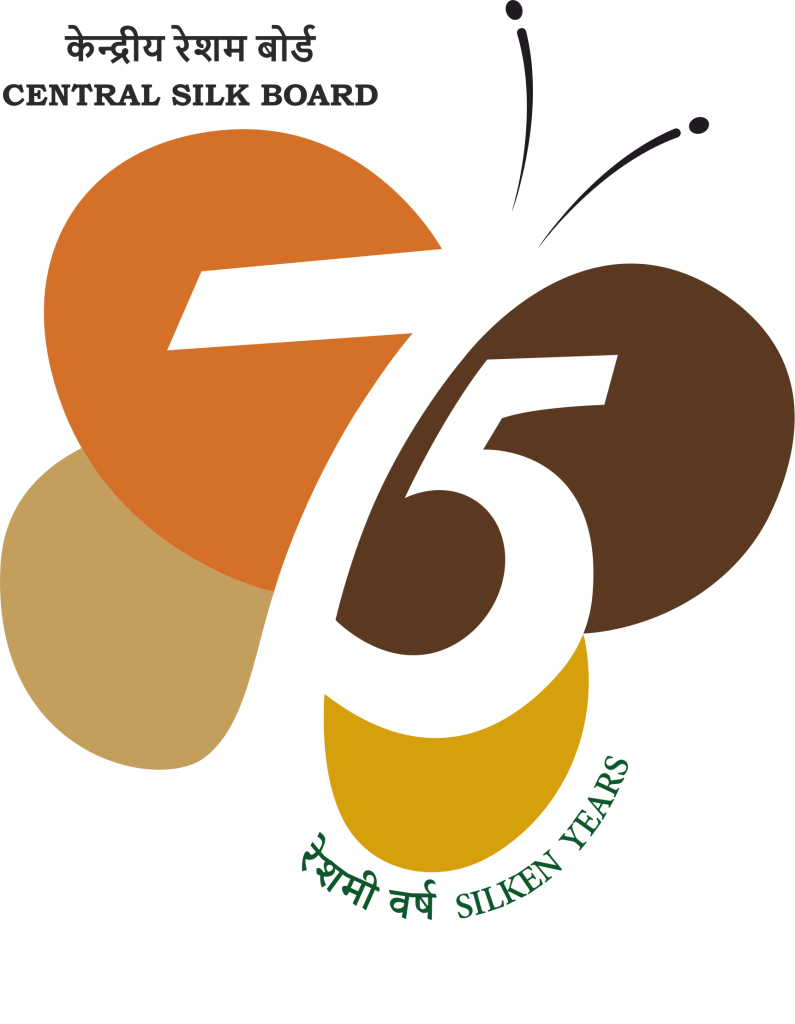By
–
Art is all about inspiration. Various forms of art take inspiration from each other. They inspire new thoughts and meet at an intersection, unleashing the creativity that is a source of sheer joy. Temples, textiles, architecture, music, and icons connecting them are an integral part of Indian culture. They have often been studied in isolation, rarely do we see that they are interconnected through the stories they tell, the motifs they use, and people who patronize them
Art, Architecture and Heritage on Silk Saris
Let us look at the intersection of textiles with history, architecture, and heritage on Silk Saris.
Temples on the Silk Sari Borders
Ask any Kanchipuram Sari enthusiast, they would immediately talk about temple borders. The lovely rich Saris woven in Kanchipuram put the temples on top of the borders in such a way that it looks like a series of temples one is wrapped in. Now I know temple borders are quite common but do you know different types of temple borders?
Gopuram Borders – The colorful tall gopurams with intricately carved figures all around them are the ceremonial gates of south Indian temples. They announce the temple from a long distance. Their tall tiered structure is recreated on top of the border piercing the main body of the Sari, just like the Gopurams appear to be piercing the sky when seen from the ground. The tiers of the Gopurams are stylized with sharp geometrical patterns, tapering slowly as they go up, to highlight them. In contrasting colors, they stand out proudly.

Small Temple Borders – The smaller temples are usually depicted through their Shikhara or the Superstructure over the sanctum. On Saris, they are denoted by a row of small triangles on top of a rich or golden border. At times they are given names like ‘Moggu’ which means bud in Tamil, as the triangular shapes also look like a fresh bud.
Rudraksha Borders – Rudraksha is associated with Shiva, considered a teardrop from his eyes. Devotees of Shiva wear Rudraksha on their bodies. Transporting the tradition on Saris, the weaver weaves the Rudraksha beads on the border along with the Gopurams, indicating that he has woven a Shiva temple. When you hold the Sari in your hands, it is like holding the sacred Rudraksha Mala.
Stories on Saris from Mithila
When the renowned Tussar silk of Bhagalpur and the lines of the geometrical designs of Mithila come together on a piece of fabric, they tell a million stories. Madhubani art has its roots in the ritual worship drawings of the region when auspicious patterns are etched on the walls for occasions like weddings and births. Lately, we see it being done on paper making it easier to hang on the wall. When the same patterns and stories are painted on the Saris, it enhances its value manifold. Artists, mostly women, painstakingly hand paint the Saris, treating it as a canvas for their creative expression.

The most popular story that women like to paint is Ram-Janaki Vivah or the wedding of Sri Ram and Sita. Remember, the wedding took place in Mithila and is rooted in the ethos of the region. Motifs of Durga and Kali on red silk are also popular, especially around the festival of Navaratri. On beige – the base color of raw Tussar, even the floral and natural elements look beautiful – making the wearer feel wrapped in nature, be it on the Silk Saris or on free-flowing dupattas.
Read More – Mithila Paintings of Ganga Devi
Silk Saris and Terracotta Temples
Bishnupur and Bankura in West Bengal are known for lovely Baluchari and Swarnachari Saris with the former woven with silk thread and the latter with gold. When you walk around the town, you are mesmerized by the brick-red terracotta temples, with baked clay panels telling stories of deities, kings, traders, and common people. Pick up Silk Saris from a local weaver and you see the same stories woven with silk threads.

I have a Sari with Gitopadesh – the scene from Mahabharata where Sri Krishna is telling Gita to Arjuna, woven on the border and pallu. Terracotta temples belong to medieval times while silk weaving tradition is definitely older. So, the question is – Did the silk weaves inspire the temple builders or vice-versa? There may not be a simple answer, as the stories have a tendency to port themselves to every medium possible to preserve themselves for posterity.
Since the temples are mostly dedicated to Krishna, we see his stories more than others on the Saris borders, on Conch Shells, on Dhokra jewelry, and on the clay panels of the terracotta temples.
Narmada on Maheshwari
Narmada is believed to be the oldest river, older than the Ganga. For the people who live on her banks, those who are nurtured by her, she is no less than a mother. Maheshwar, the capital of Rani Ahilya Bai Holkar on the banks of Narmada is home to weavers who give us beautiful Maheshwari Saris. Walking around the town you can hear the rhythmic movement of Khaddis or the looms.

If you sit by the river when the morning or evening sun rays are falling, you realize that the rays make the river look golden. These are the exact moments that the weavers have chosen to weave on borders of Maheshwari Sarees as if freezing the beauty of golden Narmada in textile. Waves of Narmada are in fact a signature pattern on the Maheshwari Saris, a way to take Narmada with you. Other popular patterns are inspired by everyday life like Chatai from the everyday mat, Chameli from flowers around, etc.
Gitagobinda Khandua of Puri Jagannath
The famous 12th CE poem Gitagobinda by poet Jayadeva is at the heart of Odisha’s culture. Gitagobinda Khandua is a silk fabric with the shlokas of the poem written on it – either using the tie and dye technique or woven using the Ikkat that is so popular in the region. Legend says that Jayadeva wanted to offer his poem to Jagannath and he could not think of a better way than to weave it on a fabric, which is the closest thing that comes in contact with the deity. Initially, he used to get it woven in his native village of Kenduli, but later it shifted to Nuapatana by the king of Puri. If you visit the temple early morning for Mangala Arti, you can see Jagannath in this Khandua. Weavers who weave Khandua maintain ritual purity by strictly eating only vegetarian food and following Shauch rituals in general.

Apart from this, there is Baralagi Pata, a silk fabric used to dress up all the deities at the Jagannath temple. It follows a color code for each day of the week like red on Sunday, black and white on Monday, multi-colored on Tuesday, Green on Wednesday, yellow on Thursday, white on Friday, and black on Saturday.
Temple traditions in a way make sure that the textile tradition of the region is preserved and enriched by the followers.
Banarasi Silk Saris
Banarasi brocades and jamavaras are every silk connoisseur’s dream. No one knows since when the weavers of Kashi have been weaving magic in silk. We do know that they lived during the time of Buddha which takes them at least 2600 years back. Famous saint-poet Kabir proudly called himself a Weaver of Kashi in many of his poems. He uses a lot of imagery of weaving to explain the deep philosophy of life when he calls life Tana-Bana or Warp and Weft. Not very common, but we do see rare fabrics with Kabir’s verses woven on silk.

Banarasi Saris are known for rich borders and Pallu in Zari, with Butis on the body. These Butis are inspired by nature like – Mango, Betel Leaves, flowers, and sometimes creepers on them. Heavier ones have a jaal or a net of motifs woven on them. Lately, designers have been innovating and creating ghats of Ganga on the borders of the silk Saris. It is fascinating to see the iconic ghats woven on the iconic silk of the city, it is another way of taking the oldest living city in the world with you as a Banarasi Souvenir. It is like the heritage map of the city on the Sari.
Inviting Water through Weaves

In the Thar desert of Rajasthan, in the colorful lanes of the bazaars of Jaipur and Udaipur, the Lahariya and Bandhani are two popular fabric designs. Lahariya is a wave-like pattern created using two or more colors. One view on this heritage design says that the waves formed on the sand dunes of the desert are replicated on the fabric by the weavers. Indeed, they look like waves on sand, and the bright colors appear vibrant on a golden backdrop of sand.
Another story says that Lehariya represents the waves on water, meant to attract rain and water to the land. As we know Thar desert is the most densely populated desert in the world and the credit for this goes to the water management ability of the people here. Making wave-like patterns on fabric gives the impression of abundance of water, a case of making the law of attraction work. You can choose which one to go with, I think both of them are equally inspiring.

Coming to Bandhani, the word comes from the Sanskrit word Pulakband – replicating the goose pimples that are formed by raised hair on our body when we are happy, indicating happiness. Even the word Polka comes from the same root. In English this technique is called – Tie and Dye, it is created by tying a part of the fabric with threads and dyeing the fabric, creating a raised pimple-like pattern at the place where it was tied. Bandhani designs are very common in both Rajasthan and Gujarat. It has been found on the garments depicted in ancient paintings of Ajanta caves.
Ikkat from Ajanta Paintings
The Jataka tales painted in the caves of Ajanta in the Marathwada region of Maharashtra date back to 2- 5th CE. The characters in these stories wear clothes with criss-cross patterns of the Ikkat weaves, making it one of the few continuously living heritage for two millennia at least.

Ikkat weaves in our times come from many regions, from Patan in Gujarat to Pochampally in Telangana to Sambalpur in Odisha. You can find them on Silk and cotton Saris, on shawls worn by the priests at Puri Jagannath temple, and in Dupattas. Ikkat comes in two primary variants – single Ikkat and double Ikkat – one of the most difficult weaves that require a high-level skill. Patan Patola from the town of Patan in Gujarat is known for its delicate and intricate double Ikkat weaves.
Even brocades and zardozi can be seen at places in the ancient paintings.
Auspicious symbols on Silk Saris

Women wearing Saris are considered embodiments of Lakshmi – the goddess of prosperity and auspiciousness. So, no wonder, a lot of their Saris are woven with auspicious symbols like a Kumbha or a full pot, Swastika, Elephants, birds, peacocks, Rudraksha. Artists play with symbols by placing some of them on the border, others on the Pallu, and sprinkle on the rest on the body of the Sari.
Isn’t it a lovely jugalbandi or symphony between our visual art forms?
References – Odisha Magazine


